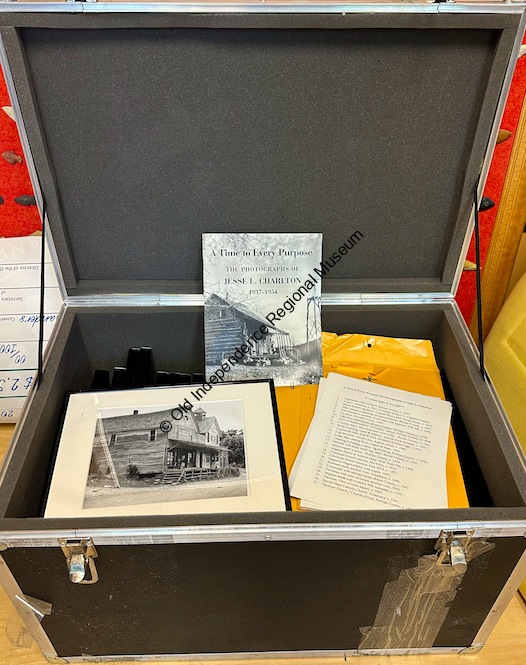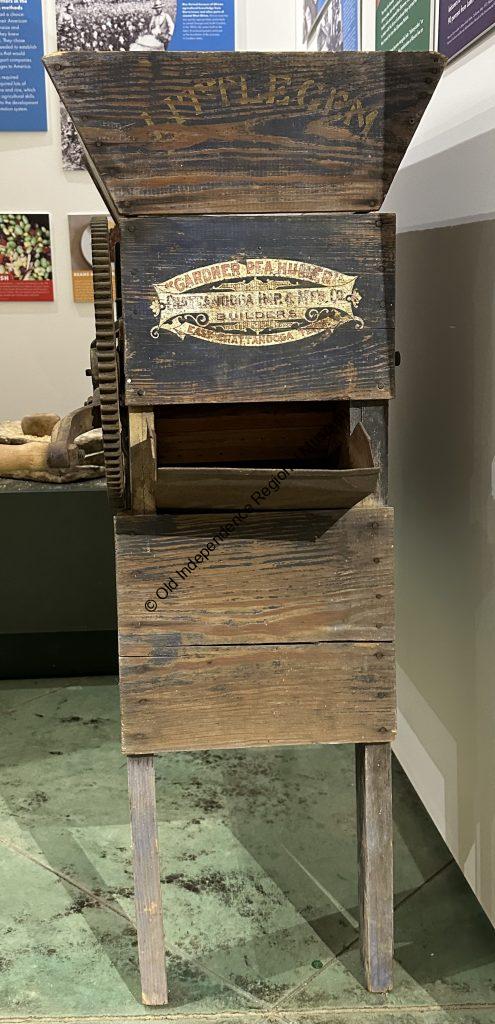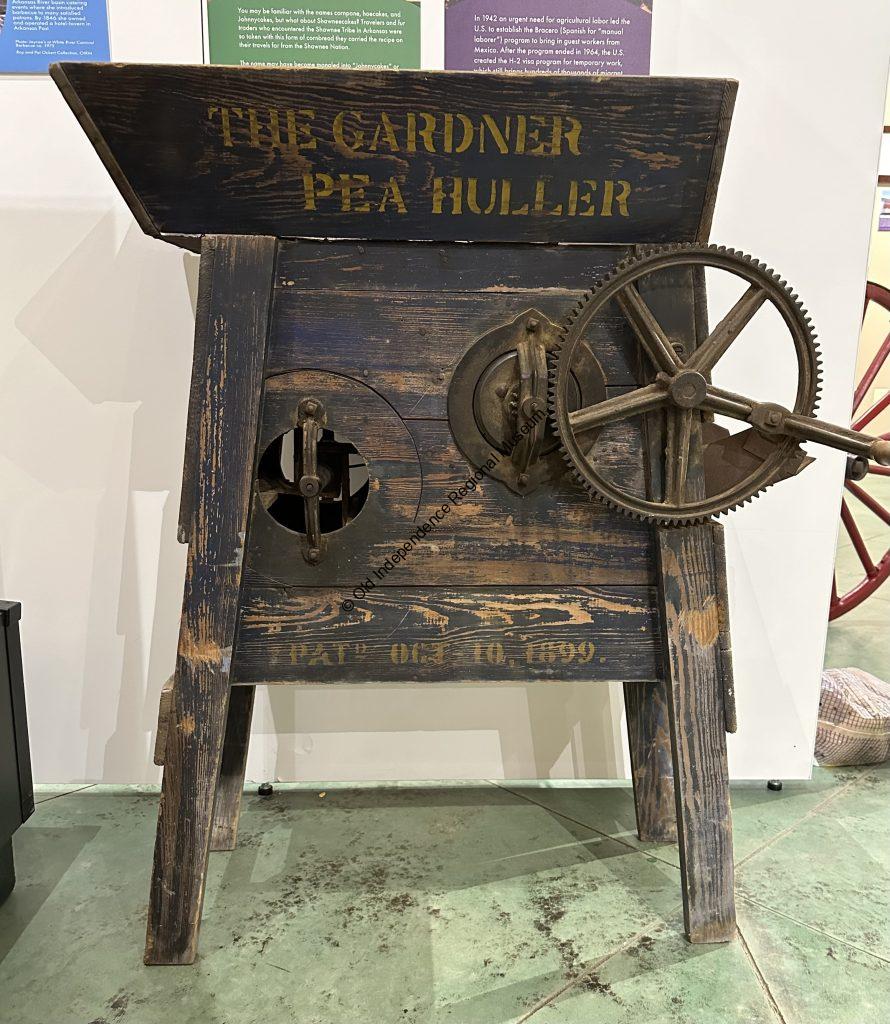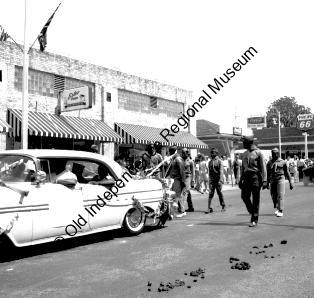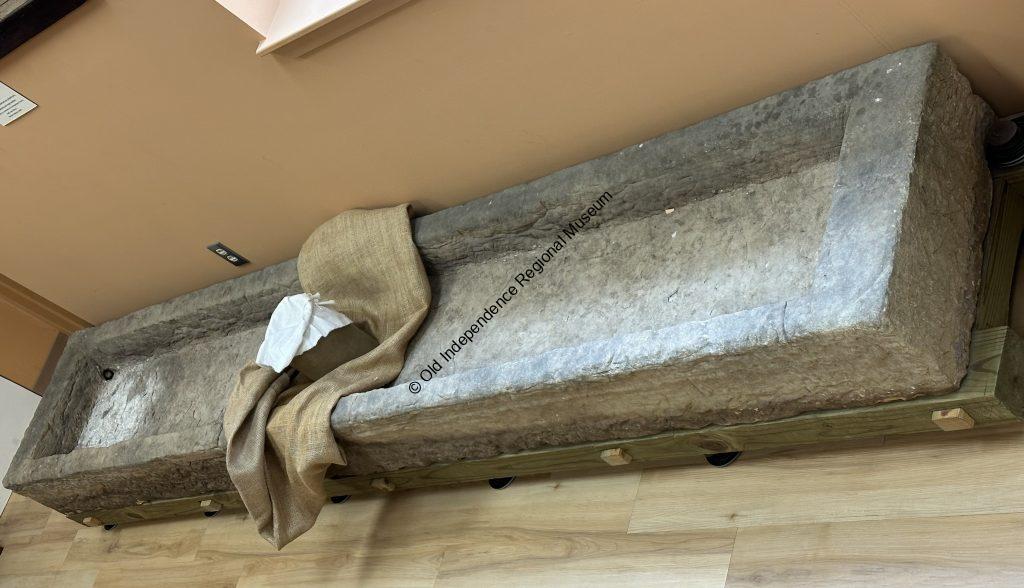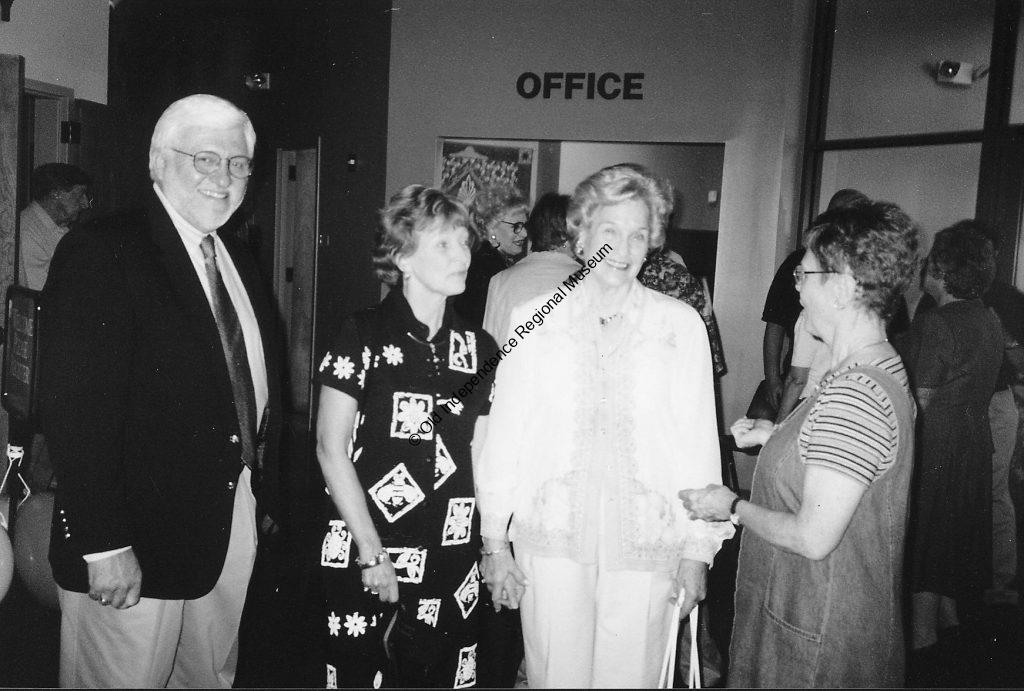A Mysterious Trunk
We received a phone call out of the blue almost a month ago from a small museum in Texarkana explaining they were cleaning their inventory area and discovered a large trunk with our return address on it. Would we like it back? We inquired to the contents and were told it contained pictures of Jesse (Laurence) Charlton that were part of an exhibit. The individual they mentioned was unknown to anyone present, and it was not until Twyla Wright appeared a few hours later that we had a possible answer. Twyla believed the individual was Willa Harkey’s father. I called the Texarkana museum and said we would love the trunk to be returned, then called Willa and asked if she knew of the exhibit of Jesse (Laurence) Charlton. Willa replied sweetly, “Well, I wondered what happened to those books.” She also volunteered to pay to have the 75-pound trunk shipped, and it arrived this week. Inside we found dozens of beautifully framed, artfully produced photographs of tenant farmers along with a picture of Willa’s father.
We excitedly called Willa who visited the following afternoon to look through the trunk with us. All the pictures within the book were the same framed photos. Willa explained the Texarkana museum had contacted her family to create an exhibit depicting her father’s pictures. The exhibit had come and gone, but the information contained within stayed in Texarkana…until this week. Willa asked what we would like to do with the pictures. With all the information ready to go, it was a given we wished to create a similar exhibit. Willa agreed to let us borrow the photos for a number of months to display after a presentation. Stay tuned for the date and time of the presentation on her father, a true master photographer who rubbed shoulders with Depression-era greats such as Dorothea Lange and Jesse (Laurence) Charlton. The next showing of these remarkable photos will be at Willa’s house.
Thank you, Willa Harkey, for your generosity in loaning us these extraordinary photos. We are excited to exhibit them for all our patrons to enjoy.

